|
Rio San juan
Playa Caleton is a small split protected from the wind and waves. Small gravers await you to serve one to you fucked colada, or a roasted lobster, to taste the feet in water. The weekend, the Dominican ones come there in a number, and environment merengue and batchata are with go. Large Playa east one of the greatest beaches of the Dominican Republic. It is good to walk there to laying down sun, and admiring the surfers who made this beach one their preferred spots. Playa Preciosa is one of the jewels of the coast. It knew to preserve its wild naturalness, and its many palm trees will offer all the shade to you of which you dream. The Golf of Playa Large east a links of 18 holes, drawn by Robert the Trent Jones. Established on cliff of Rio, 11 holes overhang the sea. It is considered by the professionals as well as by the amateurs one of the most beautiful courses of the Caribbean. The Grigri Lagoon is classified with the world inheritance of UNESCO. Protected, this mangrove of mangroves shelters many birds, in particular white brushes and vultures. It finishes in the heart of the Village, opposite the Coffee of Paris, where small boats await you to make you discover the lagoon. In the surroundings
A little further, while moving away from Rio San Juan:
With 50km in the south, San Francisco de Macorís is the economic capital of a primarily agricultural area (cocoa, coffee, plantin, rice, citrus fruits, vegetables, dairy products...)
With 70km in the east, Puerto Plata, Sosua, Cabarete:
In El Batey, 500 of the 5000 German Jews and Autichiens settled to which it Dominican government offered visas between 1940 and 1945. The descendants of the original colonists always live in Sosua, where they maintain the synagogue and a museum.
Puerto Plata draws its name from the silver plated color of the sea, it is in this area that Christophe Colomb in 1493 unloaded.
Puerto Plata is a port and a significant city (130 000 inhabitants), it is also the international airport nearest to Rio San Jaun.
Playa Dorada concentrates the greatest number of hotel rooms of the north of the island, around a gilded sand beach and of a course of golf 18 holes. You will meet the guests of the other hotels during your night exits in the casinos and the discotheques.
The museum of the amber of Puerto Plata (a beautiful example of Victorienne architecture) offers an exclusive collection of invaluable jewels manufactured based on multicoloured amber. The experts say that this amber is famous to be most transparent of the world. Amber is a semi-precious stone which was formed during million years, capturing fossils, insects and plants.
Cabarete is an internationally famous spot of board with veil. Many thinks that the attraction of Cabarete is founded on people themselves and the spirit of the tourists who like the intimacy of the small hotels. Cabarete is also excellent for those which wish to take the sun on the beach, and for the parents with little children.
With 80km in south-west, Santiago of los Caballeros:
With a population of 500 000 inhabitants, Santiago is the second city of the country. An international airport déssert the city. It is the place of ideal shopping for those which do not wish "to go down to the capital". The city counts the greatest free zone of the country and thus attracts many industries (primarily of service). It includes/understands several universities
With 80km in south-west: Concepcion of Vega, Jarabacoa
One of the oldest cities of the American continent, it was set up in 1494 per order of the Pope Julien III. The hurdy-gurdy city is a historical national park since 1977.
The central area of the Dominican Republic is a destination for the in love ones with nature and the adventurers. Located on in the valley of the central cordillera of the Dominican Alps, Jarabacoa is the obliged stage of a route of adventure. Most adventurous will be able to practise the rafting there or to climb Pico Duarte climax of the Caribbean to 3200 meters.
With 100km in south-east: Samana, Tired Terrenas, Tired Galeras
A surprising spectacle is held in winter with the accesses of the peninsula of Samaná: it is indeed the season of the loves for the humpback whales which arrive of the seas of Iceland, of Greenland, of Canada, and of North America, in order to deal with their small in hot water of the lagoon. January in March, they are practically a thousand to be remained in bay of Samana.
The spectacle is impressive, when the males spring out of water with their forty tons to fall down a few meters further, thus carrying out a true ballet. If no female reacts, the male then tries to attract one by long monotonous songs of them that the whales can hear in a radius of 30 kilometers and that only the plungers will be able to then hear. After the birth of their small, the whales prepare with the great return towards north. The "Bank value of Plata", zone of 3.000 kms2 became, since 1986, a sanctuary dedicated to the protection of the whales.
National park of Los Haities: One day when, through the fields of cane with sugar and the small villages, you will arrive in this reserve. Visit by boat the strange rock formations, the caves and the mangrooves.
You could be likely to see Taino paintings of the era pre-Colombian in the caves. National park of Los Haitises is located at the west of bay, close to Sanchez. This mangrove with the giant trees of mangrove forms a floral architecture, drawing as a green canopy above the roots which are rolled up in the marshes. Taino were the first inhabitants of the island and their preserved caves are a treasure of the park.
The visits start from Samanà, Sanchez and Sabana of Mar to the extrème point on bay of Samanà, but also of Puerto Plata, Sosua and Cabarete. The guided tours are the only means of exploring the small islands and caves of the park.
Cayo Levantado is a small island in bay of Samanà. The pirates sought the paradise (for their treasure!) and one found in Cayo Levantado. This jewel extends to the point from the Peninsula from Samanà and it is a one day destination for beautiful a escapade. Sand is white and powdery, water turquoises and crystalline is perfect to plunge and swim. A large variety of birds saw here, of the parrots, A broad number of birds edge Be found here, including parrots, of the owls, and gannets.
This island is also called Bacardi Island because because the palm trees of this island make think of the spots publicity for Bacardi. It is a beautiful island with several thousands of tourists each day. You will be able to only cross the interior of the island to foot during 15 minutes, in order to give you an idea of the center. But the beaches are fantastic and you will be able to slacken there during a few hours.
Cascade del Limon: After one hour of walk or with horse, nature will reward you for the provided effort. This cascade is spectacular, 40 meters in height between the hills of the Sierra of Samaná, with 300 meters with the top of the sea level.
With 220km in the south: Santo Domingo de Guzman
Nobody can visit the Dominican Republic without knowing the Magic, the History and the Romanticism of the first city founded in the New World. Saint Domingue is capital, the largest city and an international port.
Located at the mouth of the Ozama river, on the Caribbean Sea, the city has a beautiful port accessible to the pleasure and merchant ships. The city is connected by this port and its airport to the principal American metropolises and is a crossroads of road links. Saint Domingue is a tourist, economic and administrative center. It is the site of factories of food, alcohol, metals, textile and manufacture the cane with sugar and other products manufactured in the area.
The points of interest are the Cathedral of Santa Mariá Menor (contruite in 1514-20), where the remainders of Christophe Colomb would be preserved; the Palate (built in 1510; a museum since 1957) of Diego Colomb (in Spanish Diego Colón, 1480-1526), wire of Christophe Colomb and viceroy of the island (1511-26); churches of the 16th century, like those of San Nicolás and San Francisco; fortifications of the old Spanish city. The autonomous university of Saint Domingue (1538), the oldest university of Americas, and the university Pedro Henríquez Ureña are places of scholarship.
Dimensioned culture, you will be able to visit the National Gallery of Art (1943); the Museum of the Dominican Man (called the National Museum, 1973 before), known for his fantastic collection pre-Colombian; the Museum of Modern art (1976); the National Library (1971); and much of libraries, public or private.
No other city of the Caribbean offers as much variety of restaurants and a life so intense nocture. There are so much things to see that it is practically impossible for the inhabitants all to have visited them. It is a city which never sleeps and a superb place to meet people (do not miss Maleçon, the principal boulevard of Zona Colonial).
Saint Domingue is also a place of shopping. You will discover a single market, "Mercado Modelo". The stores offer fabulous prices on the marks of dressmakers. Saint Domingue is the most cosmopolitan city of the Caribbean, counting more than three million inhabitants and extending on 250 square kilometres.
One finds near the capital (as calls it the Dominican ones) the seaside resort of Boca Chica
270km in south-east: San Pedro de Macorís, Romana
San Pedro de Macorís, offers a strategic position to the center of the south-east of the island, which makes it possible to the tourists to easily go in the most beautiful sites of the island; plays, historic sites, restaurants, and full with activities.
San Pedro de Macoris is the cradle city of the players of baseball (of which much is stars in the United States). Visit the cathedral, the municipal market, the folk plantations, spectacles, and the factories of rum and cigars. You will have also the chance to escape in a barouche on the Boulevard from the Ocean. A beautiful exit with of things being seen much in this Dominican city.
With proximity, Juan Dolio is perfect for those which want a place calm and comfortable. Juan Dolio and its superb beach close to Guayacanes accomodate couples and families in the search of calm holidays. The tourists have the possibility of making excursions in magic places, like the caves painted by the Indians, the cascades and rivers, the islands of Saona and Catalina.
Travellers active, plunger, and golfeurs find themselves there. In the meanders of the streets and places of Violas of Chavon, you will find impressive galleries of art. Explore the museum of archaeology, or turn over in one of the courses of international class of golf or on the fine sand beaches of the Caribbean Sea.
On the beaches superb hotels are. If friends spoke to you about the unforgettable excursion of Saona, Romana is the point to embark nearest bound for the islands of Saona and Catalina.
Just in the west of Bayahibe is Altos of Chavon, an arts centre and artistic built in 1976 in order to resemble a Méditerrannéen village of the 16th century. Top of the perched city, runs out the Chavon river. Violas of Chavon has an archaeological museum which is the largest museum apart from Saint Domingue. It contains relics attractive pre-Colombians.
Violas of Chavon also has a Greek amphitheatre of 5 000 places, used for concerts of stars international. With the length of the sinuous turnings of the village, you will find galleries of art, stores and excellent restaurants. For the artists in search of inspiration in the Caribbean, Altos of Chavon has of a school of Art and a program "Artist-in-Residence" to offer workshops and residences for 3 months to the photographers, to painters, to sculptors, to musicians, to writers, and architectures. There is finally a school of Design.
With 350km in south-west: Barahona, Cabo Rojo, Pedernales
The area of Barahona & Pedernales is the secret paradise of the Dominican Republic. The principal reason for which the tourists go in Barahona is the beach and the sun. But this area is true, and of truths people live here.
You will find more mangos than you will be able to never eat some, houses with the colors pastels, parks, verandas with rocking flesh, the breeze of the Caribbean, the publicities painted with the hand on the walls, of the avocado trees, the sirens announcing the morning and midday, water turquoises vis-a-vis the city...
The Lake Enriquillo is the largest salted water lake of the Caribbean, it is the greatest reserve of alligators and iguanas. A large variety of birds lives there like pink Flemish. The visitors who go there since other areas of the country should consider one night on the spot.
With 390km in south-east: Punta Cana, Bavaro, Higüey
High place of Dominican tourism. Kilometers of beaches superb and protected Playa de Arena Gorda, Playa Bavaro, Playa de El Cortecito, Cabeza de Toro, Cabo Engaño, Juanito... Largest hotels of the country. Night Club and intense night life.
Islands of Saona and Catalina: The paradise on ground. The "natural swimming pool" of the island of Saona is a must. It is a zone where the sea is very hot and not very deep. You will be able there to swim and take photographs of the starfishes which paper the bottom of transparent water.
To know some more about the geography of the country: Consult the encyclopaedia
|






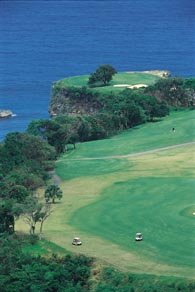

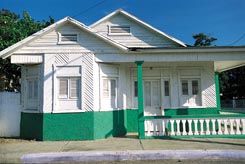




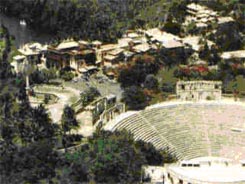




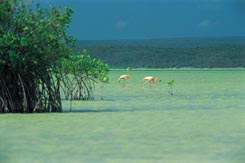
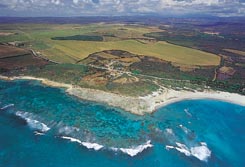
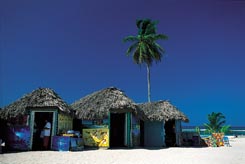
|



